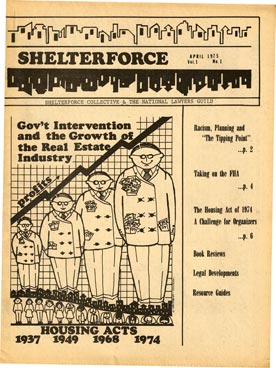
We didn’t imagine then how that trend would accelerate, nor did we anticipate the dramatic impact it would have on our work.
We believe this loss of community and the erosion of civic life represent the most important challenges facing the housing and community development movement today. Community and civic participation are the building blocks of our future. Without them, the rest of our battles for a “great society” will be lost.
In spite of the efforts of our readers and others over the past 20 years, disinvestment has starved the urban economy; drugs, accompanied by new levels of violence, have destabilized neighborhoods. Family breakdown, teen pregnancy, and irresponsible fatherhood have all added to an atmosphere less and less suited to raising the next generation to be productive adults.
Meanwhile, political institutions have declined. Party organizations have been replaced by media campaigns. Voter participation continues to drop.
Added to the breakdown of community has been a widening gulf between city and suburb. Today, city residents are dispirited, resigned to expect inaction, incivility, and further decline. Suburbanites are further removed than ever from their urban neighbors and find it harder to empathize with their plight.
Community Builders Emerge
In the face of these dismal changes, a hopeful, fledgling movement seeks to rebuild a spirit of community and restore civic life. Throughout the country, CDCs, churches, neighborhood leaders, and activists are turning their attention to “rebuilding community.” As we begin our third decade of publishing, we want to add our voice to that movement.
Here at Shelterforce, we will highlight the role that housing policies can play in restoring community; how implementation of housing programs can increase community participation; and how grassroots housing groups are achieving significant community-building results. We also hope to enliven the discussion with concrete examples of successful community building, and to strategize with our readers on how to improve on these efforts. We will search out examples of suburban groups who, recognizing a common fate with their urban neighbors, reach across the boundary of a neighboring city.
We believe that the successes of the housing, community organizing, and community development movement offer hope for the future and provide places where a restored sense of community can germinate and grow. There are plenty of isolated but hopeful examples.
Organize for Power: Build Community
We are particularly impressed by efforts in which empowerment has led to community. Inner city groups like COPS in San Antonio have created a community magnetism. According to COPS founder Ernesto Cortes, “middle class Mexican Americans began staying in the West Side even when they could afford to move…. For some, the lure of an involved public life became stronger than the lure of a North Side neighborhood.” This is a significant result, considering that an unintended consequence of many anti-poverty programs was to give poor people the opportunity to move up and out of their neighborhoods.
The retention of leaders, people with skills, and role models is one of the most important objectives of COPS. The organizers looked for natural leaders – those who coordinated their PTAs and church festivals, those who organized the baseball tournaments and Boy Scout troops, or those who served as union stewards and social club presidents.
In other places, CDCs are creating neighborhood organizations and combining new or rehabbed housing with anti-crime efforts. Urban Edge in Boston, which has built or rehabbed hundreds of housing units, has expanded its rehab and management mission to organize a “Take Back the Streets” campaign.
While the past 20 years have borne the erosion of community, it has also been a time of growth and learning within the housing and community development movement. Those of us in the community building business share a vision and a commitment to re-weaving the fabric of community in cities and suburbs alike.
We look forward to the next 20 years.



Comments